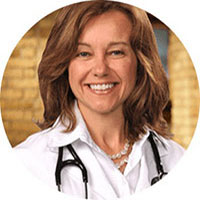Get Easy Health Digest™ in your inbox and don’t miss a thing when you subscribe today. Plus, get the free bonus report, Mother Nature’s Tips, Tricks and Remedies for Cholesterol, Blood Pressure & Blood Sugar as my way of saying welcome to the community!
How one restaurant meal can blow your nutrition for 3 days

One of the casualties of modern-day life is home cooking.
It takes time and patience and skill. Not surprisingly, 90 percent of us don’t like to do it. No wonder more and more people eat out or purchase pre-made meals.
An article I read recently likened preparing home-cooked food to sewing.
The article stated that “as recently as the early 20th century, many people sewed their own clothing. Today the vast majority of Americans buy clothing made by someone else; the tiny minority who still buy fabric and raw materials do it mainly as a hobby.”
Unfortunately, turning cooking over to a restaurant has not only turned out to be expensive, with the average household spending over $3000 per year dining out, it has also emerged as a health hazard.
Yes, you read that right. And it’s getting even harder to differentiate the restaurant foods that might not be so bad from the ones that are a heart attack waiting to happen…
Just how bad is it?
The Center for Science in the Public Interest publishes an annual list of Xtreme Eating Awards, highlighting some of the worst restaurant foods in the marketplace today.
To understand how truly Xtreme these items are, it’s important to know what is recommended as upper limits of healthy intakes for the average person. For calories, it’s about 2000 per day. For sodium, it’s 2,300 mg per day. For saturated fat, it’s 20 grams.
Last year’s Xtreme “winner” for 2018 really stuck in my mind…
Mainly because it boasted lots of things that are actually pretty good for us — like eggs, avocado, peppers, onions, salsa, and black beans. And frankly, it looks appealing in the photo — with all that vegetable-y stuff on top and around the tortilla.
I’m referring to The Breakfast Burrito at Cheesecake Factory. On the company’s website, it’s described as “A Warm Tortilla Filled with Scrambled Eggs, Bacon, Chicken Chorizo, Cheese, Crispy Potatoes, Avocado, Peppers, and Onions, Over Spicy Ranchero Sauce. Served with Sour Cream, Salsa and Black Beans”.
But the nutritional details?
- 2,730 calories: More than a DAY’s worth!
- 4,630 milligrams of sodium: TWO day’s worth!
- 73 grams of saturated fat: More than THREE day’s worth!
If you want to look at it a different way, it’s the nutritional equivalent of 7 Sausage McMuffins from McDonald’s.
And, to remind us all — this is just for breakfast. And before you have a piece of toast or a glass of juice.
Know your nutrition
Why am I writing about the Breakfast Burrito? It’s not to purposely pick on Cheesecake Factory. It’s simply to point out — in dramatic terms — how ceding control of our food can lead us astray.
Which is why it’s so important to get educated about what we’re eating.
Chain restaurants post nutrition facts online. We would all do well to look at that information ahead of time to help make our choices better ones. Not necessarily perfect, but perhaps ones that deliver fewer of the nutrients we’re actively trying to limit.
Related: How to recognize labeling tricks that make foods seem healthier
One of the things you will discover once you start doing this is that the healthier-sounding restaurant options are not necessarily healthier.
For example, Cheesecake Factory’s Eggs Benedict with Canadian Bacon and Hollandaise (which sounds much worse than a Breakfast Burrito with avocado and black beans) delivers “only”:
- 1,340 calories
- 2,026 milligrams of sodium
- 59 grams of saturated fat
Certainly NOT ideal — but at half the calories and sodium of the item you might have gravitated to in your attempt to eat healthier, it’s actually the winner.
But how could you possibly know that if you don’t dig deep and do the research?
It’s a shame we can’t trust that any food that is being served to us at a restaurant is actually health-promoting. That’s just not the case.
So, if you eat out often, but want to do it in a healthier way, check out these 10 tips to reduce self-sabotage when eating out.
And remember Step One Foods can keep you on the right track, too.













